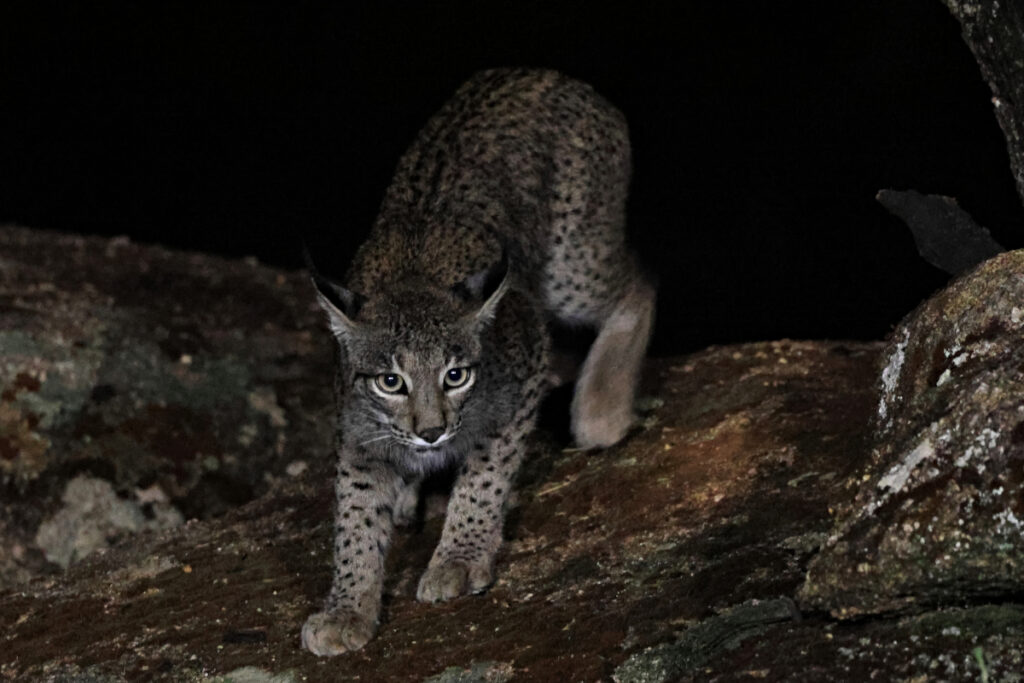Photo of the month (October 2023): Tanzanita, the Lynx
Most of my photographic campaigns in 2023 were dedicated to the Iberian Lynx (Lynx pardinus). I estimate some 300 hours in four months searching for them in the Sierra de Andújar, Southern Spain. Thus, I thought that the October´s Photo should be on my last minutes with a lynx.
The Iberian Lynx is one of the most threatened feline species in the world. Despite extensive conservation efforts over the last two decades, it remains endangered. The 2022 census revealed 1.668 extant animals, of which 326 females in reproductive age. To ensure the long term survival of the Iberian lynx populations, scientists estimate at least 3.000 animals, of which 750 reproductive-age females.
My first six days in the field attempting to spot one single individual during March were frustrating. Then, I had some few good encounters with the cats in April and early May, and the luck was over again. I had to wait several months for the lower temperatures after summer in order to try a last spotting. Finally in October, after many days in the field, I had the opportunity to take some photos in one of the farms that are partners of the Lynx conservation project.
This last encounter with the Lynx didn’t last more than five minutes, but I will take it forever. In the background of the picture, Tanzanita is preparing for an unsuccessful hunt. Silently she moves on the rocks, step by step, fixing her eyes on the rabbit that hid in a hole. Despite the slow and precise movements, this time Tanzanita lost her meal. As a two years old young Lynx, she probably has to improve some of her surviving skills.

Photographing Iberian Lynxes was an almost addicting experience. I wish I could be there everyday in Andújar, waiting in silence for the next encounter with the golden-eyed cat. Not only because these cats are awesome, but also because photography can help their conservation in several ways, if respectful with the animals and their environment. Beyond raising awareness for the need to keep funding the Iberian Lynx conservation, photography is a form of proofing life of the individuals, identified by their pattern of spots. Thanks to this unique pattern each animal has, like a human fingerprint, they can be recognized as individuals and are given a name.
All names of the cats born in a given year begin with the same letter, in a way that all the lynxes born in 2022 were named with “T”, in 2023 they are named with “U” and in 2024 they will be named with “V”, and so on. This way, it is possible to know the age of the identified animal and I hope the alphabet repeats again and again with more and more sweet names like Tanzanita – a bluish mineral that has apparently different colours according to the angle of view, just alike the yellow skin of the Iberian Lynx.
